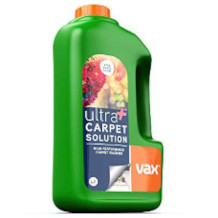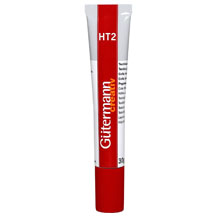Fabric shaver purchasing advice: how to choose the right product
- The most important things in a nutshell
- A lint shaver allows for gentle and clean removal of lint and knots on clothing.
- Wool and cotton are particularly prone to knots caused by friction.
- The spacer is an important extra that prevents users from accidentally cutting into the fabric.
- Corded devices work more powerfully and consistently than razors with rechargeable batteries or batteries.
Combat unsightly knots
On many of our clothes, we find small lumps and knots of fabric at some point. They are also often seen on covers of sofas and armchairs. However, this is not a sign that the fabric is about to disintegrate. With some textiles, these lumps inevitably develop when they are worn or used a lot. Wool and cotton are particularly susceptible to these lumps, also called “pilling”. Pilling occurs where the fabric is exposed to friction through movement. Fibres detach from the fabric and become matted on the surface of the fabric. The lumps appear mainly on the underarms, sides and hips. This does not make the jumper or cardigan unwearable, but it looks anything but pretty. A lint shaver helps the cherished garments to look acceptable again. The following fabrics can be treated with the little helper:
- Cotton
- Wool
- Cashmere
- Flannel
- Synthetic fibres
Besides the lint shaver, there are other tools for removing the lumps. However, these do not work as gently as the electric device. The lint roller quickly removes annoying lint, but does not cope so well with pilling. It is usually necessary to treat the affected fabric several times. The same applies to the lint brush, which also has problems with stubborn knots. The least recommended method is to pluck the knots away by hand. This loosens more fibres, causing new lint to form over time.

The lint shaver only needs one step to gently remove the lumps. Basically, the device works like any other razor. Behind the protective cover, which is perforated like a sieve, there are several rotating or vibrating blades. These are driven by a small electric motor. When the lint shaver is passed over the fabric, the cutting tools remove the lumps without coming into direct contact with the textile surface. In contrast to lint brushes and rollers, the fabric is not loosened during cutting. Thus, the clean cut prevents new pilling.
What to look for when buying a lint shaver
A lint shaver is a very simple device that has only a few features. If you want to “de-lint” large areas – such as a sofa – you should choose a powerful, mains-operated device. To protect clothing, the lint shaver should definitely have a spacer.
Shaving head – the heart of the shaver
The shaving head of a lint shaver consists of two elements: the protective cover and the razor blades behind it. A few models lack the protective cover. These are not recommended as there is a risk of cutting into textiles. The protective cover is riddled with holes like a sieve; the differences between the models are minimal. It is an advantage if the holes are of different sizes. Then the lint shaver can more easily catch knots of any size. The larger a lint shaver is, the more efficient and faster the work is done with it. A large cutting surface is especially helpful when working on furniture covers or blankets.
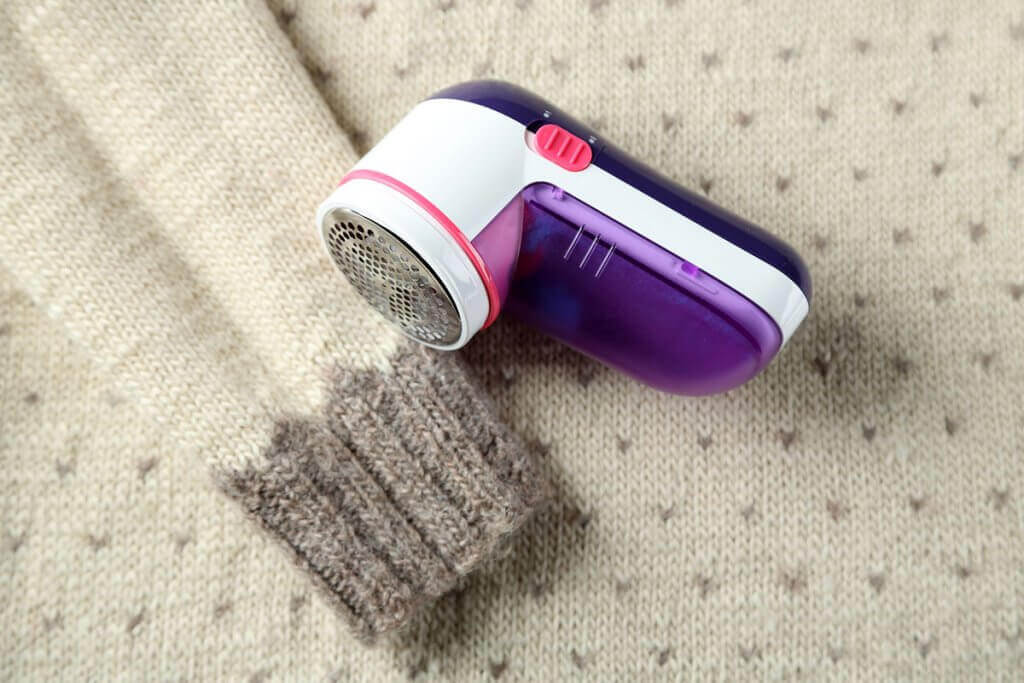
The quality of the blades plays a major role in the result. The majority of lint shavers available have two blades, only a few have three or four. These work somewhat more efficiently than devices with only two blades. More important than the number, however, is the surface area: the larger the blades are, the faster the device fulfils its purpose. Like any other blade, the razor blades in the lint shaver also become dull over time. In high-quality models, the blades are replaceable. But with some lint shavers this is not possible, which makes them unusable after a while.
Mode of operation – with or without cord?
Most lint shavers are battery operated. Usually, two AA batteries are needed. This is quite sufficient to power the small electric motor. A lint shaver with batteries has no cord to get in the way when you use it. However, you should have spare batteries to hand.
Corded lint shavers are more powerful than battery-powered models. This is useful both when working on larger surfaces and when treating several garments in succession. However, the cord can become a hindrance during use. Some lint shavers are charged via USB cable. This makes them particularly suitable for mobile use. However, they must always be charged in order to be used.
Motor power – a question of power supply
Motor power is particularly important if you want to work on larger textiles. In this case, you cannot avoid a mains-powered machine. The battery- or accumulator-powered versions would stop working relatively quickly if you tried them. These devices are designed for short, targeted uses. With long use, the motor becomes too weak, whereupon the blades no longer rotate fast enough to cut off knots and lint. Corded lint shavers work much more consistently thanks to the guaranteed power supply.
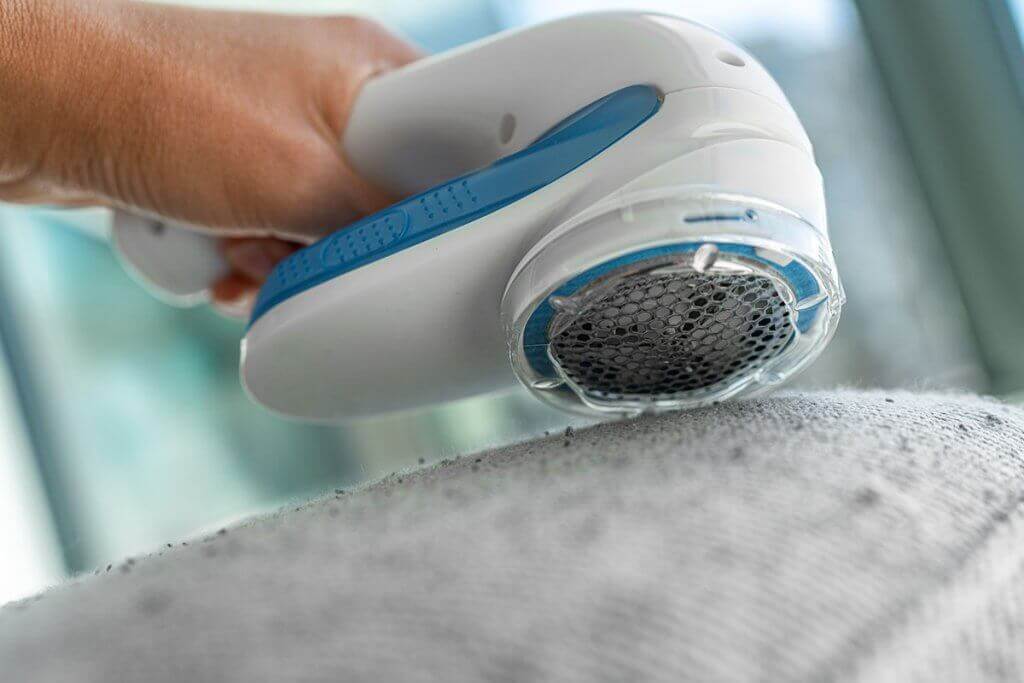
Spacer – so that nothing goes wrong
The spacer makes it easier to use the lint shaver on uneven surfaces, for example on a jumper with a woven pattern. This attachment – often a kind of rubber ring – increases the distance between the protective cover and the textile. With coarse knitting patterns, there is a risk of too much wool getting behind the cover. This could get caught in the rotating blades and, in the worst case, tear a hole in the fabric. The spacer prevents this. A height-adjustable spacer can even be adapted to a garment with millimetre precision.
To avoid damage, a lint shaver should only be passed over a textile with little force. If you are unsure about using the device, you can always use the spacer for safety.
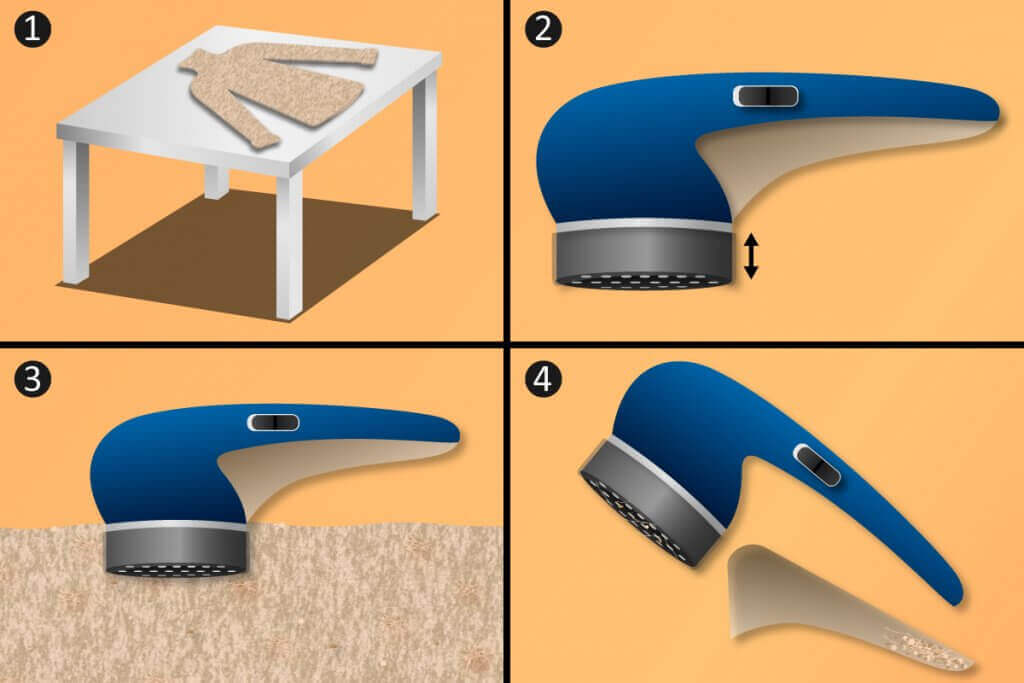
Collecting container – the end of the line for lint
Every lint shaver is equipped with a collection container for the cut fibres. Whether a large lint container is necessary depends on the intended use of the device. When “de-linting” larger areas, a large collection container that needs to be emptied less often is more convenient. A full container can impair the function of the shaver. If the fibres can no longer find room there, they clog the shaving head. Then the blades no longer rotate properly. The fibres then have to be laboriously removed. Therefore, you should always empty the container before it is completely full.
Safety mechanisms – protection for fingers and clothing
As with all shavers, there is a certain risk of injury with the lint shaver. One potential problem is that the protective cover may come off during use. This can become a hazard to fingers and textiles. Good lint shavers therefore have a safety cut-out that switches the device off as soon as the cover is removed. This safety mechanism also makes it impossible to accidentally switch on the device when changing or cleaning the blades.
More information about lint shavers
With a lint shaver, your jumper will look like new again in just a few steps. When using it, it is important to remember that the razor works best on a flat surface. If you don’t have a lint shaver yet, you can use some household items instead.
How much does a lint shaver cost?
The price range for lint shavers is relatively small, which suits prospective buyers. Such a device costs between 5 and 30 euros. As far as features are concerned, there are no major differences. Only a spacer should be available in any case. Some inexpensive shavers do without this practical extra. If you want a decent lint shaver that will work for a long time, you should invest between 10 and 20 euros.
Quick guide to use
Before using the lint shaver for the first time, you should familiarise yourself with it. A look at the instructions for use can help. Switch on the shaver on a trial basis to get a feel for its performance. Basically, it is advisable to try out the shaver on a textile that you can get over losing. Corded devices in particular have more power than they appear. Using the lint shaver is done in a few steps:
Stretch the textile over an ironing board or hard surface so that it lies as flat as possible
Check that the spacer is correctly adjusted
Run the razor over the affected areas with little pressure.
After use, empty the collection container and clean the blades.
How to reduce pilling
Pilling occurs when fabrics are exposed to mechanical friction. This causes fibres to come loose from the fabric. The loosened fibres then mat together on the surface, creating the hard pilling knots. Textiles made of wool and cotton fluff more than synthetic materials because natural fibres are shorter and fall out of the fabric compound more easily.
As we move around in our clothes, friction is unavoidable. However, friction can be reduced when washing. Garments made of wool or cotton should always be turned inside out. This way, the outside of the garment is not chafed during washing. Delicate textiles should be washed on the wool cycle at cold or 20 degrees Celsius, without spinning. Fabric softener is not used. Instead, special natural fibre detergent is used. Friction also occurs in the dryer, which is why this step should be skipped if possible. Wool should not be put in the dryer anyway, as it can shrink.
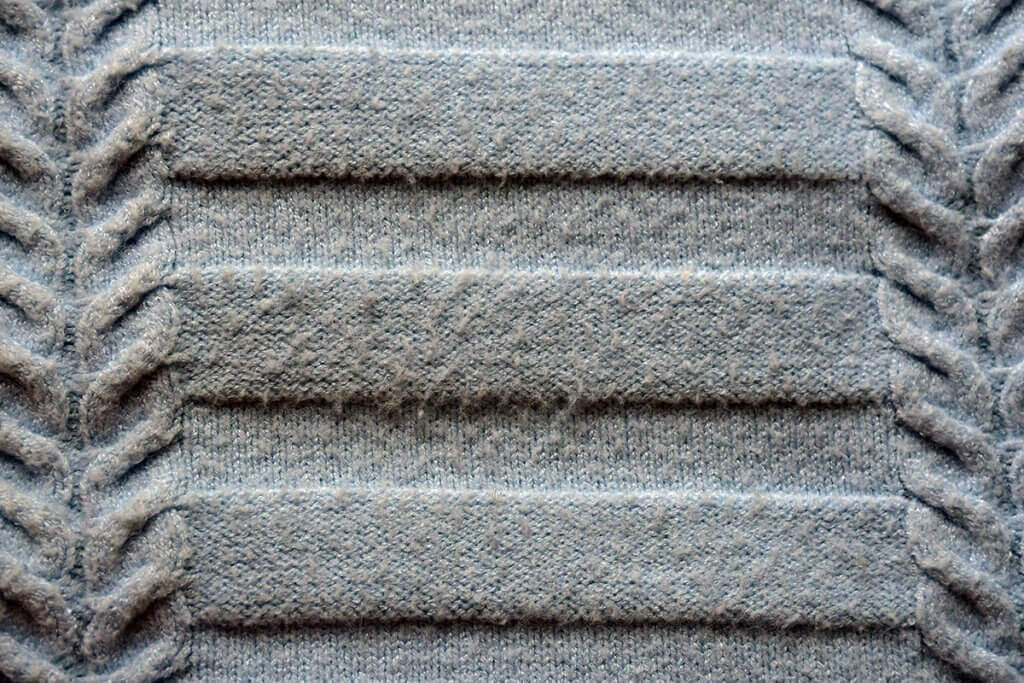
What alternatives are there to the lint shaver?
If you don’t have a lint shaver at hand, you can use one of the following tools instead:
A strip of tape wrapped around your hand can also be used to remove knots and lint. This is an effective tool for quick use, but not very effective compared to the lint shaver. It doesn’t really get rid of pilling knots.
A good alternative is the nail scissors. When using them, you don’t have to worry about accidentally roughening the fabric even more. However, they are hardly suitable for larger areas.
If you have a steady hand, you can also use razor blades or disposable razors to remove pilling. However, this is not only less efficient than using a lint shaver: a moment’s carelessness can quickly damage the fabric.
The lint roller is not a common household item, but it is a proven alternative to the lint shaver. The roller has an adhesive layer, so basically this method works like using tape. The lint roller can be used to quickly remove loose lumps. However, the lint roller does not really cope with stubborn matted knots.

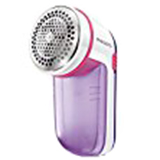


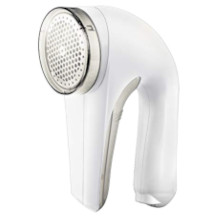
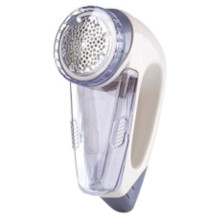


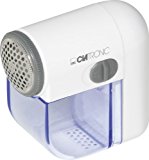

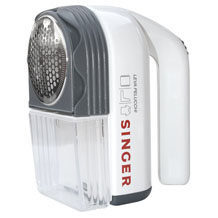

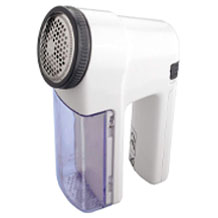

 111,235 reviews
111,235 reviews

